NVIDIA® Jetson Nano 4GB Development Kit
NVIDIA® Jetson Nano 4GB Development Kit
Small but powerful, the NVIDIA Jetson Nano Developer Kit offers you the ideal gateway technology into the incredible world of artificial intelligence. Giving users the ability to run a number of neural networks in parallel with each other and a variety of embedded applications that offer the first steps into robotics and deep learning, the NVIDIA Jetson Nano is an ideal small AI computer for makers, learners and developers alike.
MoreProduct Details
Description
Small but powerful, the NVIDIA Jetson Nano Developer Kit offers you the ideal gateway technology into the incredible world of artificial intelligence. Giving users the ability to run a number of neural networks in parallel with each other and a variety of embedded applications that offer the first steps into robotics and deep learning, the NVIDIA Jetson Nano is an ideal small AI computer for makers, learners and developers alike.
Details
If you’ve been thinking about getting involved with AI technology and where to begin, the NVIDIA Jetson Nano Developer Kit is the place to start. The Jetson Nano delivers all the computer performance to run modern AI workloads at unprecedented size, power, and cost. Users across the full spectrum of AI interest can now run AI frameworks and models for applications like image classification, object detection, segmentation and speech processing.
What AI possibilities does the Jetson Nano unlock?
- Understanding: your NVIDIA Jetson Nano purchase will allow your computer to gather a proper understanding and vision of artificial intelligence.
- Interaction: create robots with the ability to interact with the world around them and utilise their understanding in an endless list of applications.
- The power for change: join NVIDIA’s vision for a better world with the help of AI contributions. Develop AI assistants and automated processes to enhance the way you live.
Further Features
NVIDIA Jetson Nano in the UK is also supported by NVIDIA JetPack, which includes a board support package (BSP), Linux OS, NVIDIA CUDA®, cuDNN, and TensorRT™ software libraries for deep learning, computer vision, GPU computing, multimedia processing and much more.
Checkout the NVIDIA Nano Community Page to see all the projects being created.
JetPack SDK is used across the entire NVIDIA Jetson™ family of products and is fully compatible with NVIDIA’s world-leading AI platform for training and deploying AI software. This proven software stack reduces complexity and overall effort for developers.
NVIDIA Jetson Nano – buy with confidence
Offering robust and exciting AI technology to the masses, the NVIDIA Jetson Nano Developer Kit is tomorrow’s SBC available at a highly affordable price. Here at OKdo, we’re proud to be one of NVIDIA’s Jetson Nano UK suppliers and deliver the technology as part of a catalogue that offers only the finest SBC options to our customers.
| Jetson Nano Module |
| > 128-core NVIDIA Maxwell™ GPU |
| > Quad-core ARM® A57 CPU |
| > 4 GB 64-bit LPDDR4 |
| > 10/100/1000BASE-T Ethernet |
| Power Options |
| > Micro-USB 5V 2A |
| > DC power adapter 5V 4A |
| I/O |
| > USB 3.0 Type A |
| > USB 2.0 Micro-B |
| > HDMI/DisplayPort |
| > M.2 Key E |
| > Gigabit Ethernet |
| > GPIOs, I2 C, I2 S, SPI, UART |
| >2 x MIPI-CSI camera connectors |
| > Fan connector |
| > PoE connector |
| Kit Contents |
| > NVIDIA Jetson Nano module and carrier board |
| > Quick Start Guide and Support Guide |
| DEVELOPER KIT | |
| GPU | 128-core Maxwell |
| CPU | Quad-core ARM A57 @ 1.43 GHz |
| Memory | 4 GB 64-bit LPDDR4 25.6 GB/s |
| Storage microSD | (not included) |
| Video Encoder | 4K @ 30 | 4x 1080p @ 30 | 9x 720p @ 30 (H.264/H.265) |
| Video Decoder | 4K @ 60 | 2x 4K @ 30 | 8x 1080p @ 30 | 18x 720p @ 30|(H.264/H.265) |
| Camera | 2 x MIPI CSI-2 DPHY lanes |
| Connectivity | Gigabit Ethernet, M.2 Key E |
| Display | HDMI 2.0 and eDP 1.4 |
| USB | 4x USB 3.0, USB 2.0 Micro-B |
| Others | GPIO, I2C, I2S, SPI, UART |
| Mechanical | 100 mm x 80 mm x 29 mm |
Specifications
| SKU | 1999831 |
|---|---|
| mpn | 945-13450-0000-100 |
| brand | NVIDIA® |
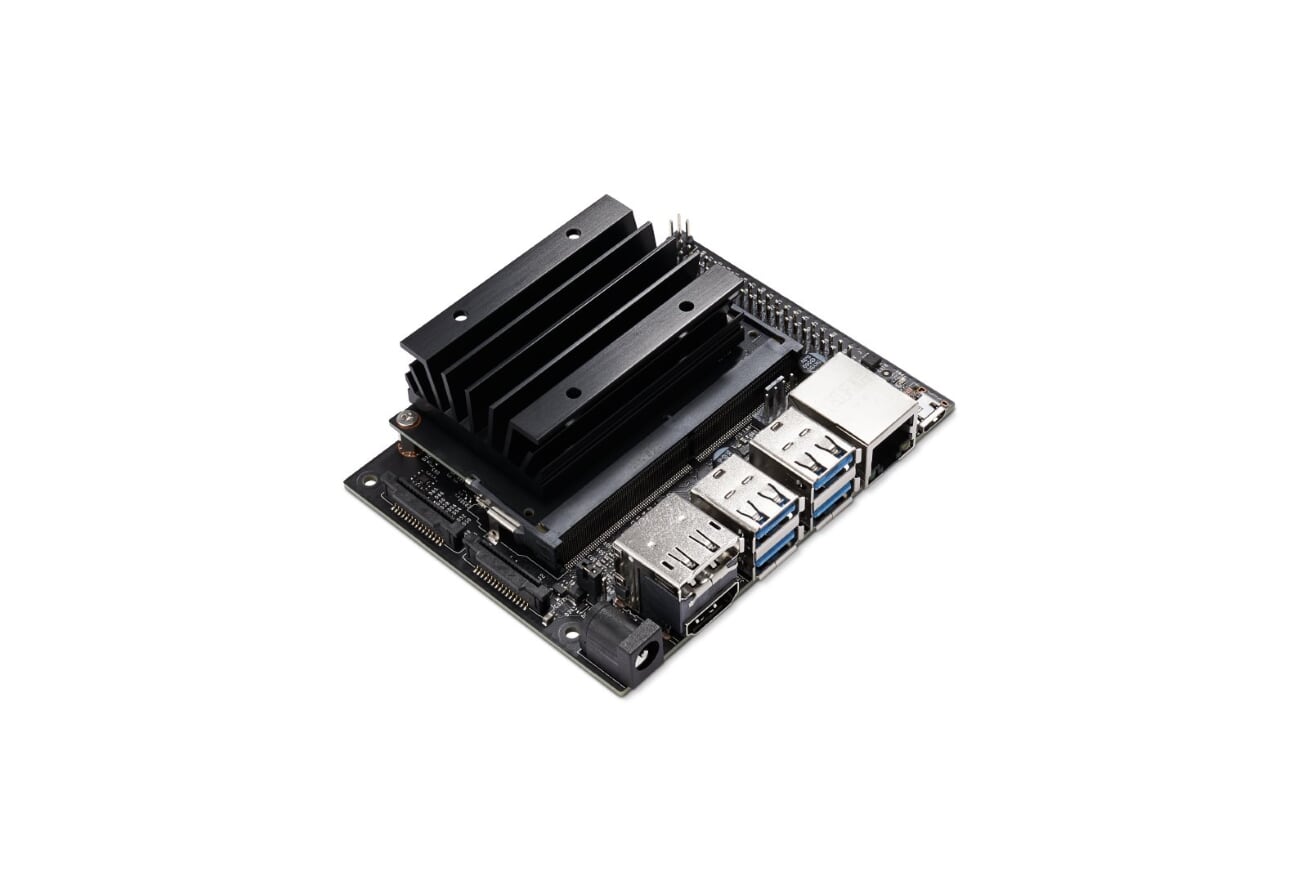
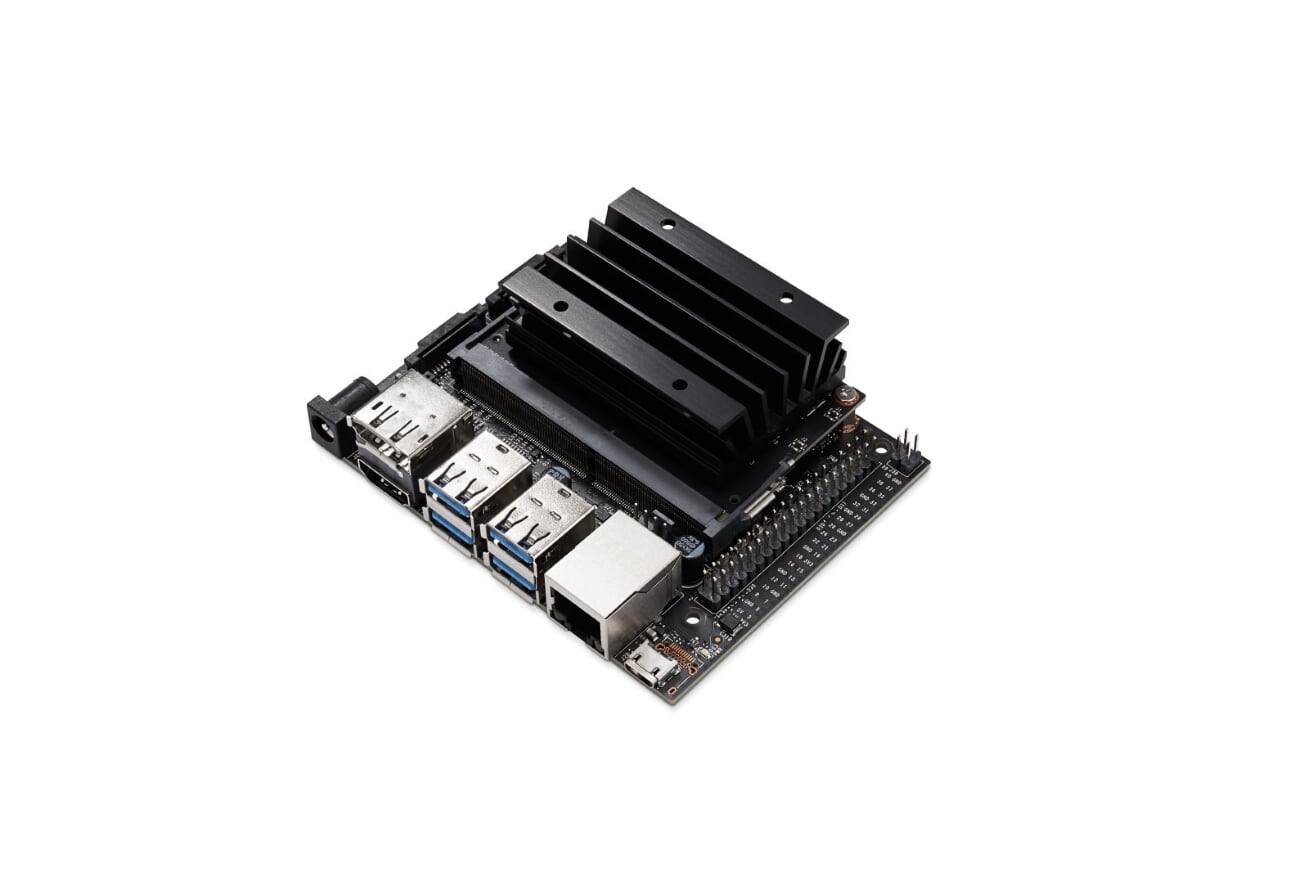
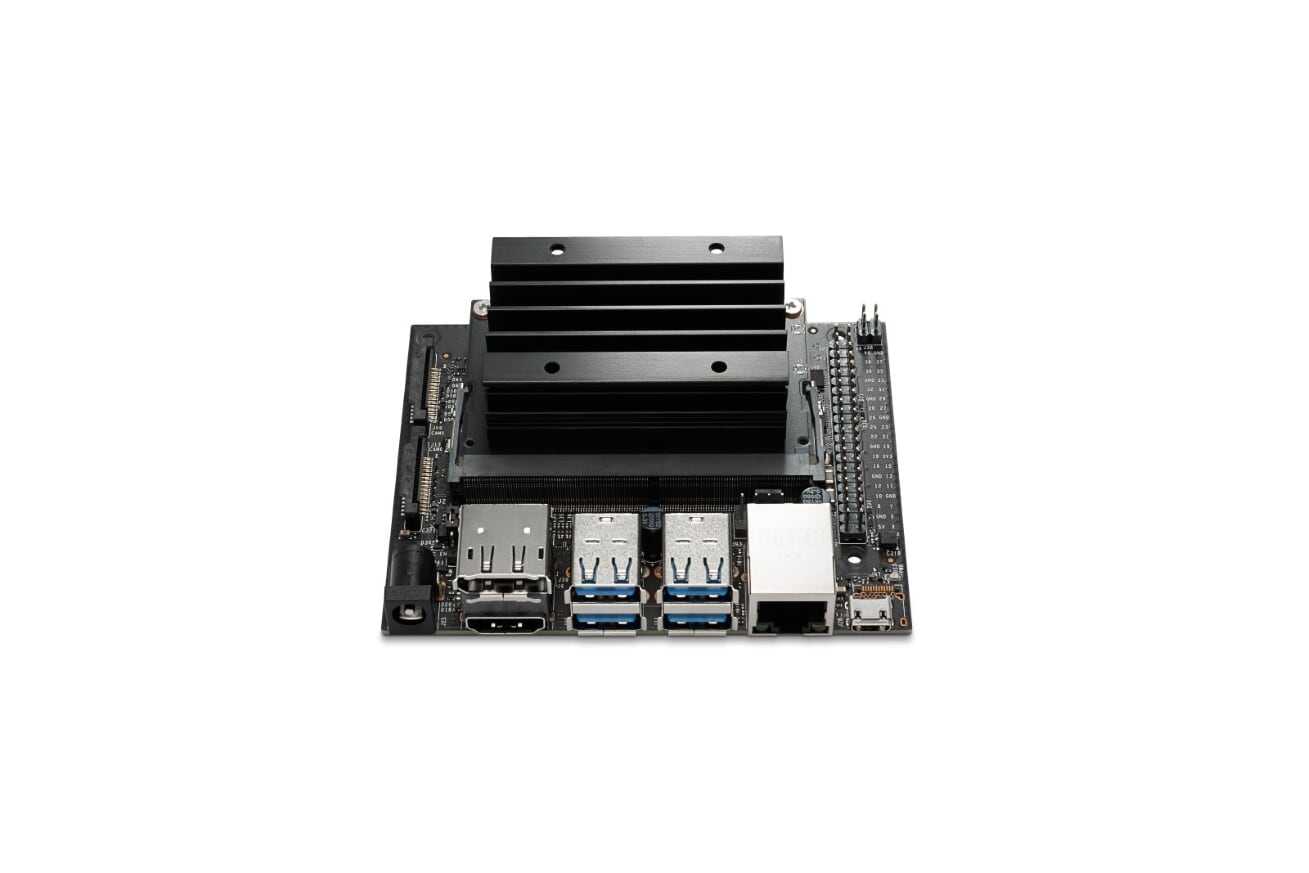

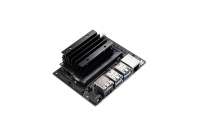
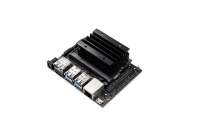
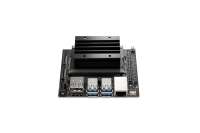



How versatile can an SBC get? The strength of the Raspberry Pi and now the Pi4 makes it the market leader, however, they have limitations. When the puff has dropped off your PI you're then stuck for a solution. Stepping up to continue with the advancement is the Jetson Nano. Powerful and able to effortlessly run Linux applications and complex scripts it still manages to continue effortlessly. I personally use mine as a Spaghetti Detective server, but that's not a limitation, its an option. This little board can also effortlessly gobble up quite complex AI tasks and more recently in my case ANPR for car parking and access control. It's well priced and well organised with powerful coding platform Jetpack. It's obviously silent unless you run a fan and even then its PWM header means it will only run flat out on the most demanding applications. There are however some very concerning downsides..... No WiFi, No Bluetooth as standard. These are fundamental to any AI development, however, that's easily remedied with an Intel AC8265 board that fits under the main processor and heatsink. You can also add a USB Bluetooth dongle and WiFi dongle at the cost of two USB ports. The AC8265 has Dual Band WiFi and Bluetooth as standard and longer range antennas. The GUI is limited due to a very called down version of Linux, however, this is probably why the unit is best described as headerless. it does boast HDMI and DP sockets, 4 USB 3.0 sockets, LAN socket and 2.1mm power supply for 10w operation and 5w operation can rely on the micro USB but with that said a decent 4A PSU is recommended for a stress free computing experience. Simply SSH into the Jetson and then send commands until your heart's content once you're up and running and away you go. I give the Jetson a 5 out of 5 as its a huge leap forward compared to the dwindling efforts of the PI which is sadly getting more costly and yet is stagnant. The Spaghetti Detective cant run on a PI which isn't surprising so in an ironic twist of fate, the OctoPi Print controller runs on a Raspberry Pi 3 b+ and that's controlled from an Nvidia Jetson Nano server which handles the AI for managing the dreaded spaghetti when you leave your print unattended. The 'PI' unless improves its GPU is dead in the water. The Jetson is tomorrows SBC as they are just about price comparable. Lastly, the Jetson Nano comes pretty bare so you need to buy a PSU.